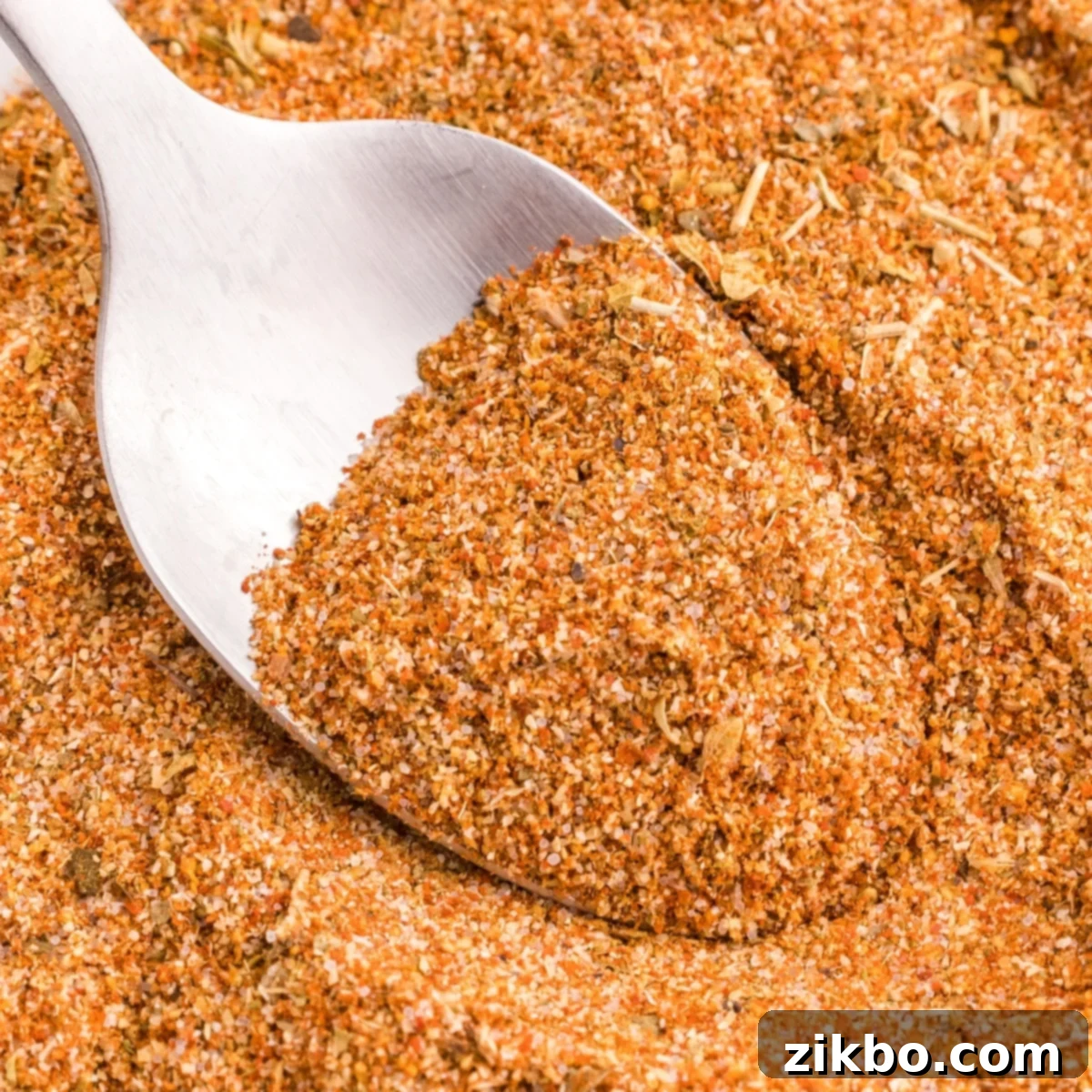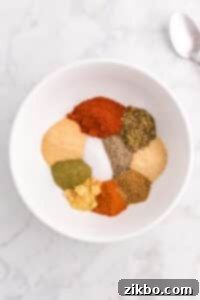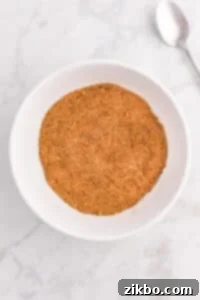Homemade Cajun Seasoning: Your Ultimate Guide to a Flavorful DIY Spice Blend
Say goodbye to bland store-bought options! This Homemade Cajun Seasoning Recipe is not just a perfect substitute; it’s a vibrant, aromatic upgrade, crafted from basic spices you likely already have in your pantry. Why make an extra trip to the grocery store when you can create your own exceptional spice blend at home?
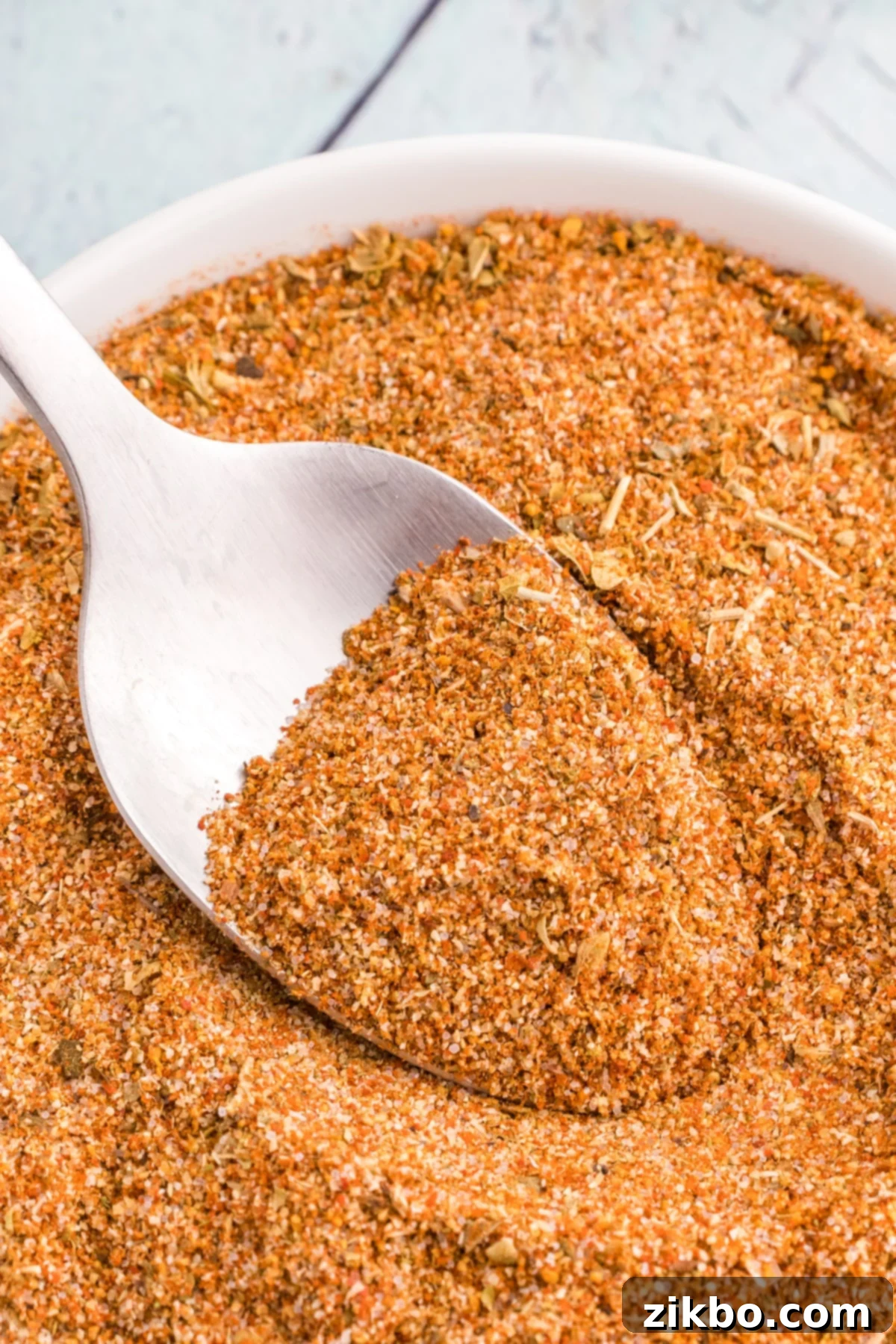
There’s nothing more frustrating than starting a recipe and realizing you’re missing a key ingredient – especially a specific spice blend. We’ve all been there! That’s why I’ve previously shared my recipes for homemade ranch seasoning, pumpkin pie spice, and various other essential mixes. Today, I’m thrilled to share my go-to recipe for the most authentic and flavorful homemade Cajun seasoning.
This meticulously balanced blend of spices delivers a bold, unforgettable flavor that is ideal for introducing the vibrant, often spicy, notes of Cajun cuisine to your favorite dishes. From savory meats to roasted vegetables, this versatile mix will become an indispensable part of your culinary toolkit.
If you haven’t yet ventured into making your own custom spice blends, there’s no better time to start than today with this incredibly easy Cajun spice mix. It’s a simple step that will elevate your cooking and add an exciting new dimension to your meals, all while saving you money and ensuring peak freshness.
Why Make Your Own Cajun Seasoning?
The benefits of crafting your own Cajun seasoning blend extend far beyond mere convenience. Here’s why going DIY is always the best choice:
- Unmatched Freshness: Store-bought seasonings can sit on shelves for months, losing their potency and vibrancy. When you make your own, you’re using fresh spices, ensuring a more intense and aromatic flavor in every dish.
- Complete Control Over Ingredients: Worried about additives, anti-caking agents, or excessive sodium? Making your own blend means you know exactly what goes into it. You can choose organic spices, adjust salt levels, and even add unique twists to suit your dietary needs and taste preferences.
- Cost-Effective: While the initial investment in individual spices might seem higher, a well-stocked spice cabinet will save you money in the long run. You’ll avoid paying premium prices for small bottles of pre-mixed blends, and you’ll always have the ingredients on hand for a variety of homemade mixes.
- Customizable Flavor Profile: Do you like it extra spicy? Less salty? More garlicky? Your kitchen is your laboratory! You can easily tweak the ratios in this recipe to create a Cajun blend that’s perfectly tailored to your palate.
- Convenience: Once you have your core spices, whipping up a batch of Cajun seasoning takes less than 5 minutes. No more last-minute runs to the grocery store when a recipe calls for this flavorful blend!
Cajun Seasoning Vs. Creole Seasoning: Understanding the Differences
Both Cajun and Creole cuisines are vibrant staples of Louisiana’s rich culinary landscape, and their seasoning blends often share many similarities, leading to common confusion. However, there are distinct differences worth noting, stemming from their unique cultural origins and cooking philosophies.
Cajun Cuisine: Originating from French Acadian exiles who settled in rural Louisiana, Cajun food is often described as “country food.” It typically features hearty, rustic dishes, often made with locally available ingredients and a focus on one-pot cooking. Cajun seasoning tends to be spicier and bolder, with an emphasis on simpler flavor profiles built around heat and earthiness. Dishes like jambalaya and dirty rice are quintessential Cajun.
Creole Cuisine: Born in New Orleans, Creole food is often referred to as “city food.” It reflects a melting pot of cultures, including French, Spanish, African, Italian, and Native American influences. Creole seasoning often incorporates a wider variety of herbs and spices, sometimes including ingredients like bay leaf, white pepper, and a touch more paprika, resulting in a more complex and typically milder (though still flavorful) profile. Tomato-based dishes, like classic gumbo and étouffée, are much more common in Creole cooking, often starting with a rich roux.
While both blends share many common spices like garlic, onion, and cayenne, Creole seasoning might lean into a broader spectrum of aromatics and sometimes incorporate more specific ingredients. This homemade Cajun blend focuses on the core, bold, and spicy flavors that define traditional Cajun cooking.
Read more: For a deeper dive into the historical and culinary nuances, check out What’s the difference between Cajun and Creole – or is there one? – The Historic New Orleans Collection.
Essential Ingredients for Your Homemade Cajun Spice Blend
Crafting the perfect homemade Cajun seasoning starts with a thoughtful selection of high-quality, fresh spices. Each ingredient plays a crucial role in building the robust, complex flavor profile that Cajun cuisine is known for. Here’s a breakdown of the key components:
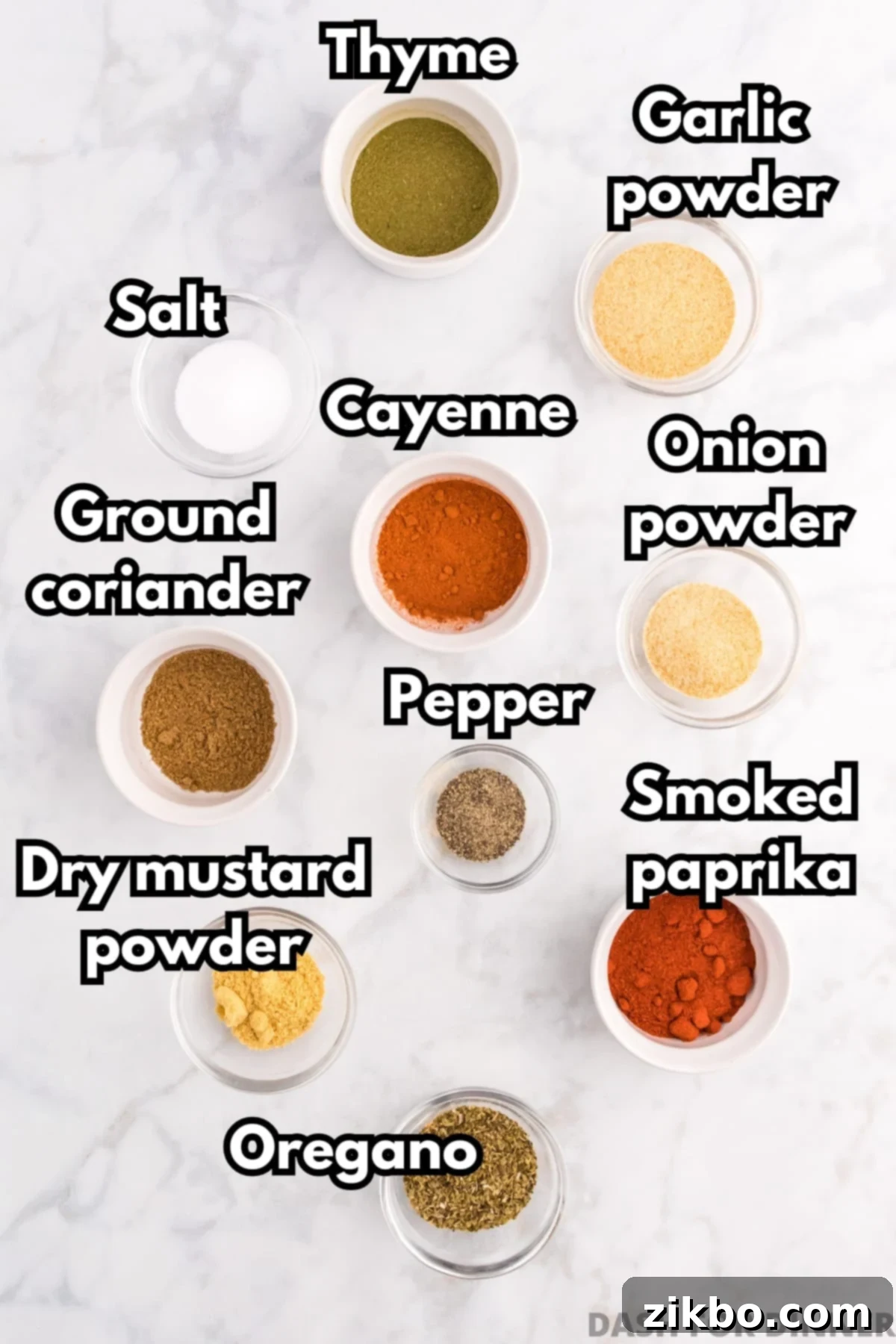
- Garlic Powder: A fundamental ingredient, garlic powder provides a savory, pungent base that is characteristic of Cajun flavors. It’s an essential aromatic and a non-negotiable component for depth.
- Smoked Paprika: This is where the magic happens! Smoked paprika not only adds beautiful color but also imparts a rich, deep, smoky flavor that truly elevates this blend. While regular paprika can be used in a pinch, smoked paprika is highly recommended for an authentic taste.
- Dried Oregano: This earthy, slightly bitter herb adds a classic Mediterranean and, more importantly, a traditional Southern Louisiana touch to the blend. You’ll need 2 tablespoons of this dried herb for a balanced flavor.
- Onion Powder: Complementing the garlic powder, onion powder contributes another layer of aromatic sweetness and savory depth. Ensure you’re using a fresh batch, as it can clump over time, especially if exposed to moisture.
- Dried Thyme: Thyme offers a subtle, minty, and earthy note, integral to the herbaceous complexity of Cajun seasoning. While dried thyme leaves work well, ground thyme integrates more smoothly into the fine powder blend.
- Ground Cayenne Pepper: This is the primary source of heat in your homemade spice blend. The quantity can be adjusted to your preference – use less for a milder mix or more for a fiery kick that truly awakens the palate.
- Ground Coriander: Derived from the dried seeds of the cilantro plant, coriander has a warm, citrusy, and slightly sweet flavor. Don’t worry if you’re not a fan of cilantro; ground coriander tastes distinctly different and adds a lovely bright note.
- Dry Mustard Powder: Also known simply as “mustard powder,” this is a crucial ingredient that adds a subtle tang and helps to bind and enhance the other flavors. It provides a unique pungency and should not be substituted for the best results. I also love using it in my homemade cheese sauce or baked macaroni and cheese for that extra layer of flavor.
- Fine Grain Table Salt: Salt is a critical flavor enhancer. A fine grain table salt disperses evenly throughout the blend, ensuring every bite is perfectly seasoned. You can adjust the amount based on your dietary needs or personal preference.
- Ground Black Pepper or White Pepper: While regular black pepper works wonderfully, white pepper is very common in traditional Cajun cuisine, often used for its flavor and to avoid visible black specks in lighter dishes. If you can find it, white pepper adds an authentic touch, but black pepper is a perfectly acceptable alternative.
Check the recipe card below for the precise quantities needed for each ingredient.
Crafting Your Homemade Cajun Seasoning: Simple Steps
Yes, you absolutely can make your own homemade Cajun seasoning! This incredibly easy spice blend requires just a few simple ingredients and takes less than 5 minutes to prepare, making it a perfect quick kitchen project.
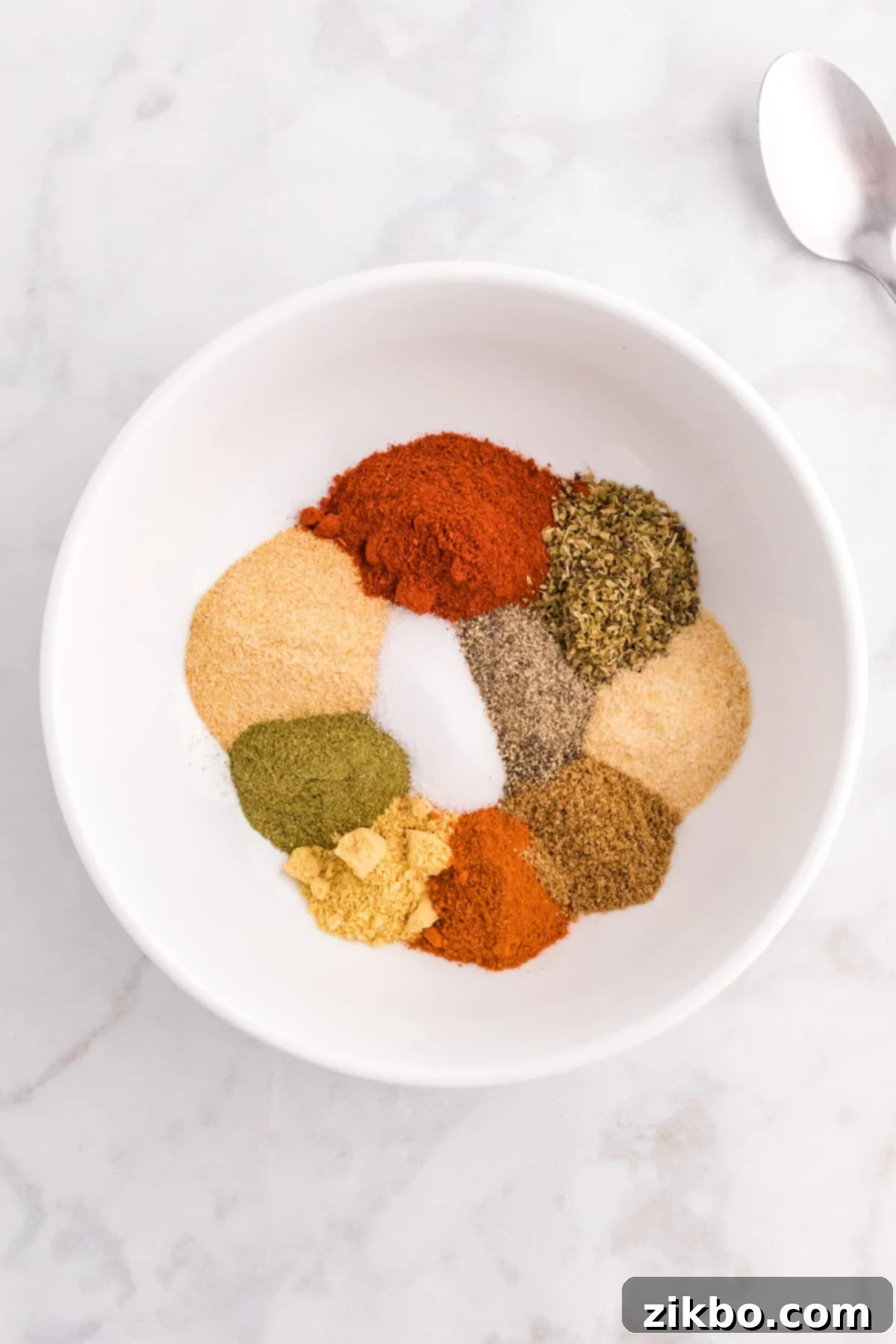
Step One: Measure and Combine All Ingredients
Carefully measure out all of your dried spices and herbs. Add them into a small, clean mixing bowl. This includes garlic powder, smoked paprika, dried oregano, onion powder, dried thyme, ground cayenne pepper, ground coriander, dry mustard powder, salt, and your choice of pepper (black or white).
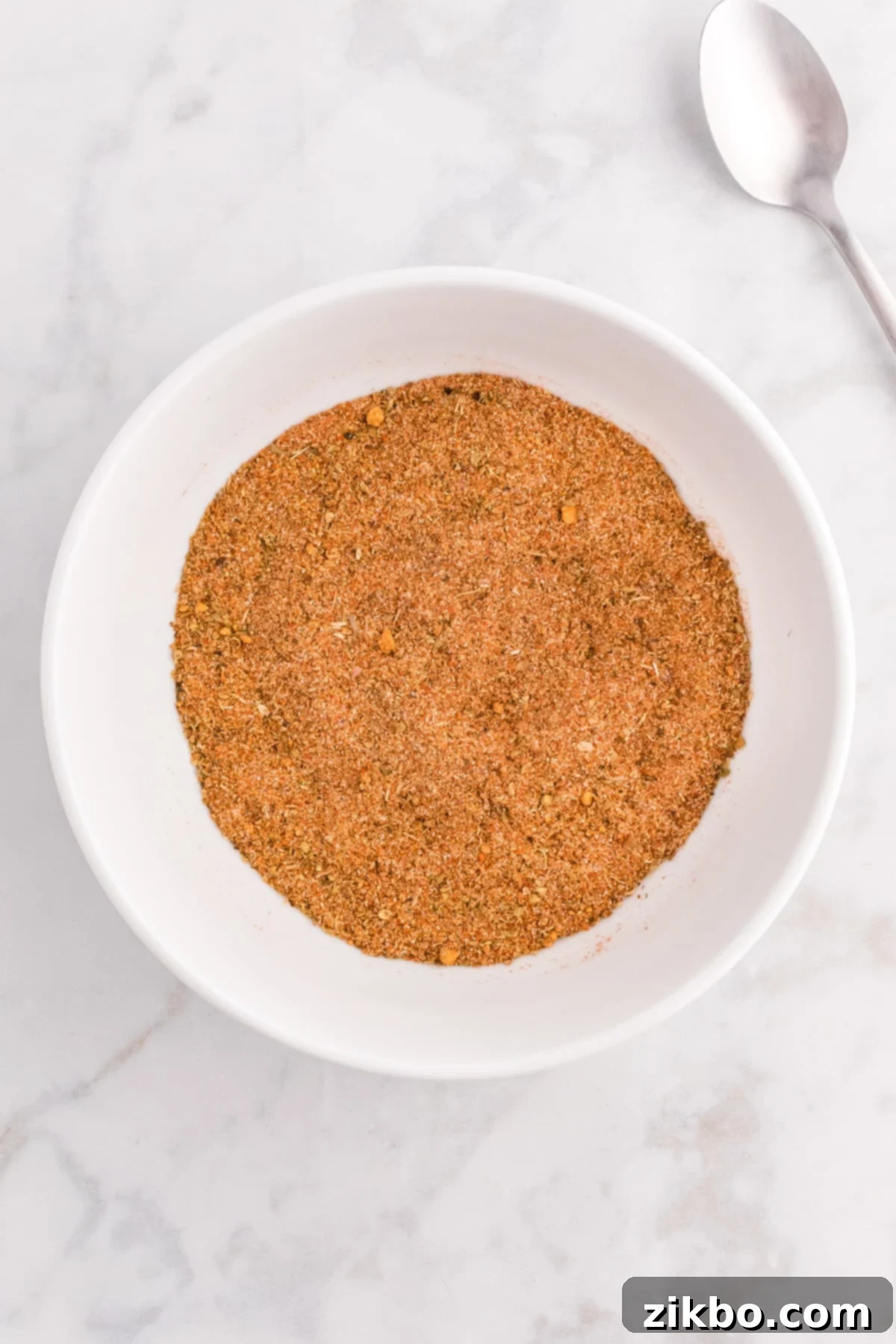
Step Two: Whisk Thoroughly Until Well Combined
Using a whisk, gently but thoroughly mix all the ingredients together. Continue whisking for at least 1-2 minutes to ensure that every spice is evenly distributed, and there are no clumps. You want a uniform blend so that each sprinkle delivers the full spectrum of Cajun flavor. Alternatively, you can place all ingredients in a jar, seal it tightly, and shake vigorously until completely combined.
Step Three: Store for Freshness
Once your blend is perfectly mixed, transfer it to an airtight container. A mason jar with a tight-fitting lid or a dedicated spice jar works perfectly. Proper storage is key to maintaining its potency.
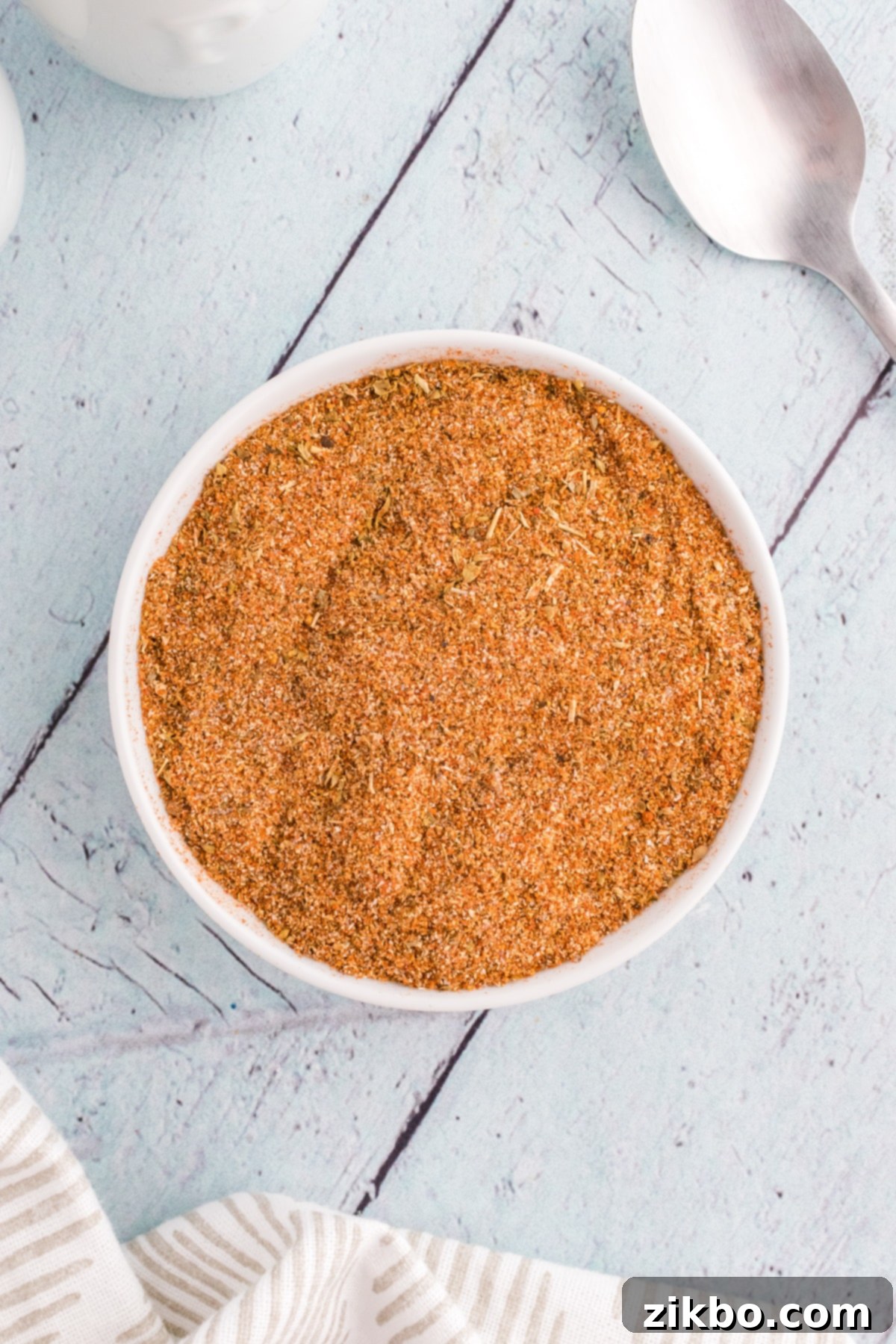
Storing Your Homemade Cajun Seasoning for Maximum Freshness
Proper storage is crucial for maintaining the potency and flavor of your freshly made Cajun seasoning blend. With the right technique, your homemade mix will remain aromatic and vibrant for many months.
After mixing, immediately transfer your seasoning blend to a mason jar with a lid OR any other high-quality, airtight storage container. The goal is to minimize exposure to air, which is the primary enemy of spice freshness.
It will keep beautifully in a cool, dry, and dark spot—such as a pantry, spice cabinet, or spice drawer—for 6-12 months. While it might remain safe to consume beyond this period, its flavor and aroma will gradually diminish.
Top tip for humidity: To prevent caking, especially in humid environments, add about ½ teaspoon of uncooked rice to the bottom of the jar before adding your seasoning. The rice grains will naturally absorb any extra moisture, keeping your blend free-flowing. Remember to remove the rice before using the seasoning!
Unleash the Flavor: Versatile Ways to Use Your Homemade Cajun Seasoning
Once you have a batch of this incredible homemade Cajun seasoning on hand, you’ll find countless ways to infuse your meals with its irresistible bold and spicy flavors. Here are just a few ideas to get you started:
- Cajun Shrimp: Toss shrimp with olive oil and a generous amount of seasoning, then sauté or grill for a quick and flavorful dish.
- Cajun Salmon: Rub salmon fillets with the seasoning before baking, pan-searing, or grilling for a zesty, perfectly spiced meal.
- Cajun Chicken: Use it as a dry rub for chicken breasts, thighs, or wings before roasting, grilling, or frying. It’s fantastic for “blackened” chicken.
- Season Meats and Vegetables: This blend is incredibly versatile for seasoning almost any protein (pork, beef, tofu) or vegetable (potatoes, bell peppers, zucchini, corn).
- Add it to Popcorn: Sprinkle a dash over freshly popped popcorn for a savory, spicy snack that beats any pre-packaged flavor.
- Sprinkle it on Eggs: Elevate your breakfast by adding a pinch to scrambled eggs, omelets, or even deviled eggs.
- Make Cajun French Fries: Toss hot french fries with the seasoning for a homemade version of a popular restaurant side.
- Flavorful Dips: Stir it into hummus, cream cheese, sour cream, or Greek yogurt-based dips for an instant kick at your next gathering.
- Chex Mix Upgrade: Incorporate it into your homemade Chex mix recipe for a spicy, savory twist.
- Spice Up Burgers: Mix it into your ground meat before forming patties for a juicy, seasoned burger.
- Soups and Stews: Add a teaspoon or two to gumbos, jambalayas, chilis, or any hearty stew for authentic Southern depth.
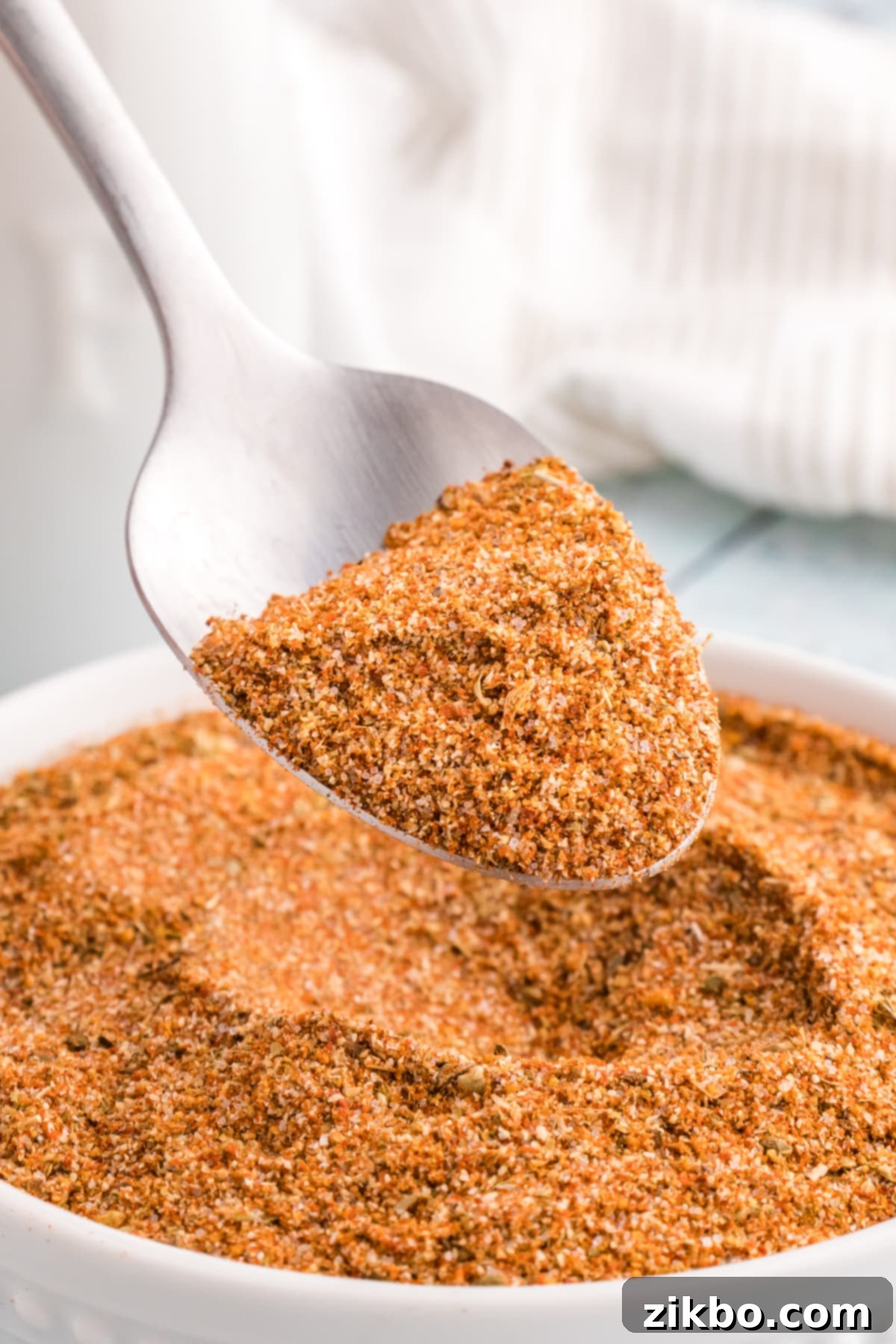
Expert Tips for Mastering Your Homemade Cajun Spice Mix
Creating your own spice blends is a rewarding experience. Follow these expert tips to ensure your homemade Cajun seasoning is always top-notch:
- Fresh is Best: The quality of your final blend directly correlates with the freshness of your individual spices. Start with good quality, fresh herbs and spices. If your spices have been sitting in the cupboard for years, their potency will be significantly diminished. A quick sniff test can tell you if they’re still vibrant – if you can’t smell them, they won’t add much flavor.
- Tone Down or Amp Up the Heat: The cayenne pepper is your primary lever for adjusting the spiciness. If you prefer a milder blend, simply reduce the amount of cayenne pepper to ½ or 1 teaspoon. For those who love intense heat, feel free to add an extra teaspoon or even some red pepper flakes for another layer of spice.
- Customize to Your Palate: Don’t be afraid to tweak this recipe over time according to your personal preferences. Maybe you like more garlic, less salt, or a smokier flavor. Make a small batch, test it in a dish, and then adjust the ratios in your next larger batch. This blend is a fantastic starting point for your unique Cajun signature.
- Consider Whole Spices (for advanced users): While this recipe uses ground spices for convenience, serious home cooks might consider grinding whole spices (like coriander seeds or dried oregano leaves) for an even more aromatic and freshly potent blend. This requires a spice grinder or a clean coffee grinder, but the difference in freshness can be remarkable.
- Salt Adjustment: This recipe includes salt, making it an all-in-one seasoning. However, if you’re on a low-sodium diet or prefer to control salt levels in your cooking, you can omit the salt from the blend and add it separately to your dishes as you cook.
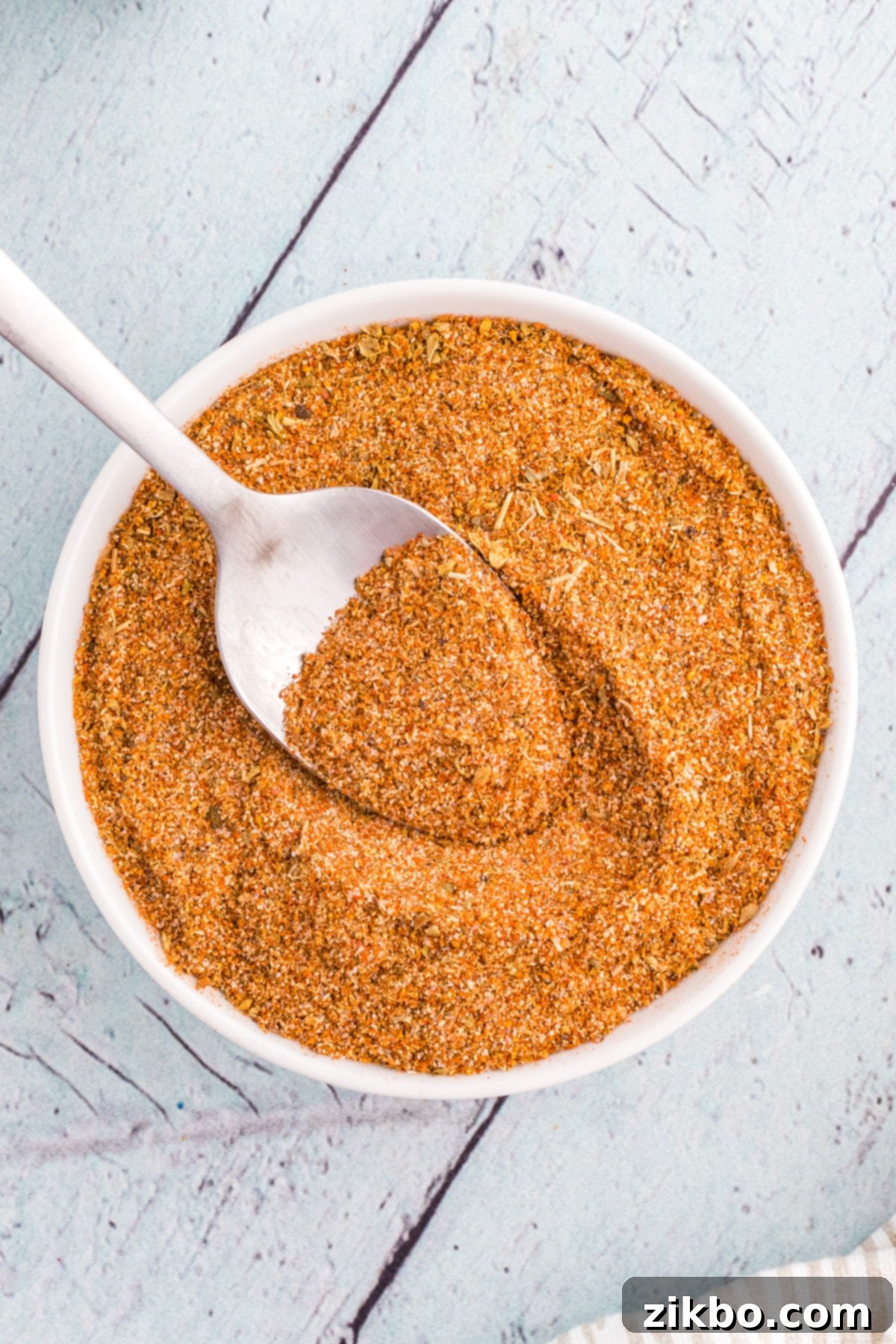
Recipe Frequently Asked Questions (FAQ’s)
Absolutely! You can easily prepare this Cajun seasoning blend without salt if you prefer to control the sodium content in your cooking or are on a low-sodium diet. If you omit the salt from the blend, remember to add salt to taste separately as you cook your finished dishes to ensure optimal flavor.
Yes, this recipe is incredibly flexible and scales up or down with ease. You can certainly make a smaller batch if you’re just trying it out or a much larger one to have on hand for extended periods. It’s also fantastic for portioning into attractive jars and giving as thoughtful, homemade food gifts during the holidays or for special occasions. Just tie it with a nice ribbon or twine and attach a label with the ingredients list and suggested uses!
Generally, most Cajun seasoning blends—both store-bought and homemade—are naturally gluten-free as they are composed solely of spices. However, some commercially processed spices or blends might be manufactured in facilities that also handle wheat or gluten-containing ingredients, leading to potential cross-contamination. If you have severe gluten sensitivities or Celiac disease, it’s always important to double-check the packaging of individual spices for certifications or warnings about shared facilities. When making it homemade, you have full control over ensuring all your individual spices are certified gluten-free.
The level of spiciness in this blend is entirely customizable! As written, with 2 teaspoons of cayenne pepper, it offers a noticeable but balanced heat. If you prefer a milder flavor, you can reduce the cayenne to 1 teaspoon or even ½ teaspoon. For those who love a fiery kick, feel free to increase the cayenne to 3 or even 4 teaspoons, or add a pinch of red pepper flakes for extra intensity. Always adjust to your personal taste!
No, for a dry seasoning blend like this Cajun mix, it’s crucial to use dried herbs and spices. Fresh herbs contain moisture, which would lead to clumping, spoilage, and significantly reduce the shelf life of your blend. Dried herbs are concentrated in flavor and designed for long-term storage in a dry format.
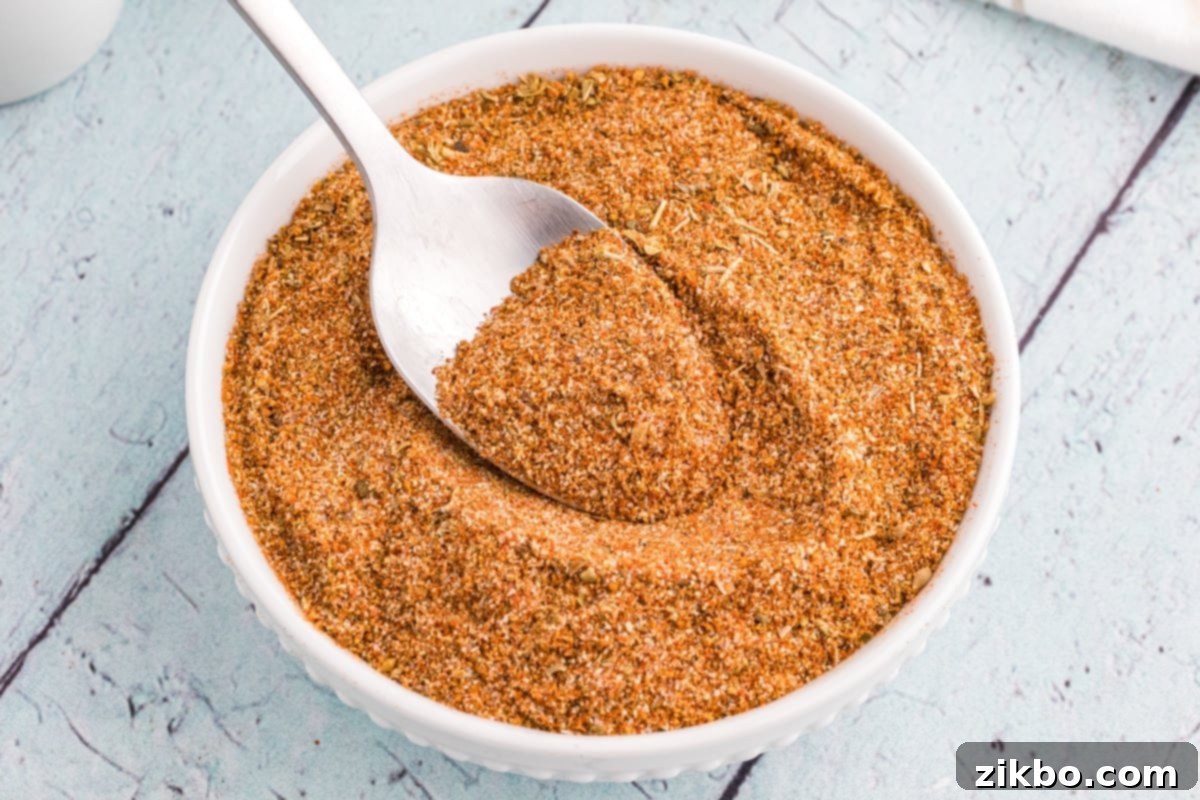
If you loved this recipe for homemade Cajun seasoning, please let me know by leaving a 5-star review in the recipe card or by commenting below! Your feedback means the world. You can also tag me on Instagram @dashfordinner to share your delicious creations.
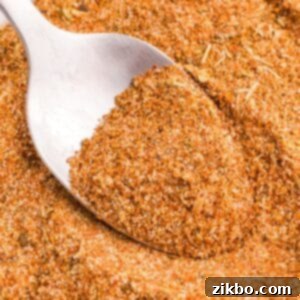
Homemade Cajun Seasoning Recipe
Print
Pin
Rate
Ingredients
- 2 tablespoons garlic powder
- 2 tablespoons smoked paprika
- 2 tablespoons dried oregano
- 1 tablespoon onion powder
- 1 tablespoon dried thyme
- 2 teaspoons ground cayenne pepper
- 2 teaspoons ground coriander
- 2 teaspoons dry mustard powder
- 2 teaspoons salt
- 1 teaspoon black pepper or white pepper, if available
Instructions
-
Add all of the measured dried spices and herbs to a small, clean mixing bowl.

-
Using a whisk, mix everything together thoroughly until all ingredients are completely combined and uniform in color. Ensure there are no clumps, which could indicate uneven flavor distribution.

-
Transfer the freshly made Cajun seasoning to a clean, dry mason jar with a lid or any other airtight storage container. This prevents moisture and air from degrading the spices.
-
Label your container with the blend name and date it was made. Store it for 6-12 months in a cool, dry, and dark place like a spice cupboard or pantry to maintain maximum freshness and flavor.
-
Use your vibrant homemade seasoning generously as desired, or whenever a recipe calls for that distinctive Cajun kick. It’s perfect for seasoning meats, enhancing vegetables, or adding a zesty flavor to just about anything!
Notes
Nutrition
Please note that some of my blog posts here at Dash for Dinner may contain affiliate links. If you make a purchase through these links, I will get a small commission at no additional cost to you. Please see my Disclaimer for more information.
